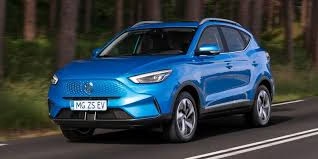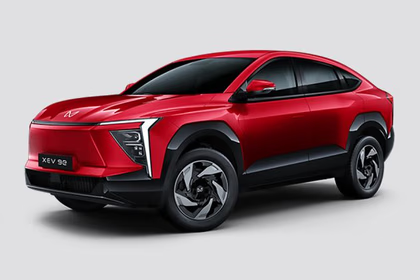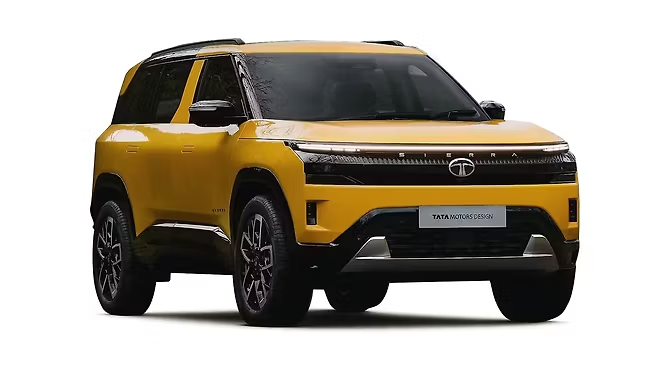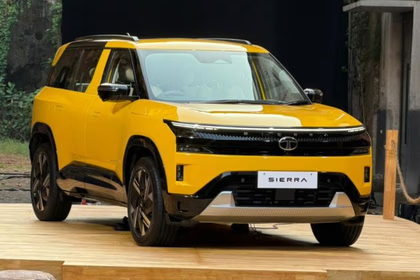Introduction
India’s EV market in 2025 is the most active battlefield in the automotive sector. With government incentives, growing charging points, and increasing consumer consciousness regarding sustainability, EV adoption is gaining momentum at record speed. Amidst this high-growth ecosystem, two names have been repeatedly clashing for the crown — Tata Motors and MG EV Motor India.
MG EV had been leading Tata in EV sales for months on the back of its runaway success with its subcompact Comet EV and best-selling ZS EV. But July 2025 has flipped the script again, with Tata Motors retaking the top spot on India’s EV sales list.

India’s EV Boom in 2025
- More than 100,000 electric vehicles are being sold every month in the country, a significant increase compared to the 2023-24 numbers.
- Increasing middle-class demand for sub-Rs 15 lakh EVs is redefining the demand curve.
- Tier-2 and Tier-3 cities are now becoming new growth centers for EV adoption.
The Tata vs MG EV Rivalry
- Tata has been an early pioneer with offerings such as Nexon EV, Tiago EV, and Punch EV, ruling the affordable segment.
- MG Motor shook up the market in 2024–25 with affordable Comet EV and premium ZS EV, temporarily surpassing Tata sales.
- The war has become emblematic of “affordable vs premium” EV strategies in India.
July 2025 EV Sales Snapshot
July 2025 was one of the best months ever for India’s electric passenger vehicle market, with sales of over 15,400 units, close to a doubling of the same period last year. EVs currently represent close to 5% of total passenger vehicle sales in the nation, reflecting the speeding-up adoption rate in both urban and semi-urban areas.
Total EV Sales (India, July 2025):
- Approximately 15,423–15,528 units were sold.
- This is nearly 93% year-over-year compared to July 2024.
Tata Motors vs MG Motor India:
- Tata Motors regained the top spot with approximately 6,019 units of sales in July 2025. Though its overall share fell from last year’s level, it is still the single-largest EV brand with nearly 38% share.
- MG Motor’s growth during the last year has been tremendous, but Tata’s July return highlights the intense competition between the two.
Other Significant Players:
- Mahindra claimed third spot with 2,810 units, close to doubling its market share to approximately 17%.
- Hyundai sold 610 units, marking a ninefold increase in sales from last year, driven by the success of the Creta Electric.
- BYD accounted for about 457 units, recording consistent growth but slightly off its June sales.
- Kia recorded its best month of 2025 with 57 units, boosted by the just-launched Carens Clavis EV.
Luxury EV Segment:
Though not in the mass race, luxury brands also made some headway — BMW at the top with 233 units, followed by Mercedes-Benz (85 units) and Volvo (41 units), reflecting increased interest in the high-end EV segment.
| Metric | July 2025 Figure |
| Total EV sales | ~15,423–15,528 units |
| Tata Motors | ~6,019 units (38% market share) |
| MG Motor India | ~5,061 units (32% share) |
| Mahindra | ~2,810 units (17% share) |
| Hyundai | ~610 units |
| BYD | ~457 units |
| Kia | ~57 units (best monthly sales) |
| Luxury segment leader (BMW) | ~233 units |
Tata Motors’ Performance Boost
Tata Motors’ resurgence in July 2025 was not a fluke — it was the product of a well-layered approach that married product variety, market penetration, and consumer confidence. The brand, long identified as India’s EV revolution face, banked on its broad portfolio, intelligent pricing, and steady building of support infrastructure to take the leadership back from MG Motor.
Popular Models Pacing the Way
- Nexon EV was a consistent volume driver in the midsize SUV category, appealing to families seeking practicality and range.
- Punch EV was a surprise hit in July, achieving the ideal blend of affordability, small size, and long-range ability — winning over urban consumers as the number one choice.
- Tiago EV continued to rule the mass market EV space, drawing first-time EV customers and price-sensitive families.
Expansion of Charging Network & Dealerships
- Tata Power’s partnership with Tata Motors has led to thousands of public and semi-public charging stations in cities and on highways.
- Dealership and service presence extended to Tier-2 and Tier-3 cities, taking EVs closer to semi-urban homes.
- This broader reach provided Tata with a significant advantage in acquiring new customers beyond metro centers.
Aggressive Pricing & Financing Offers
- Tata took advantage of its local manufacturing lead to maintain competitive pricing, particularly in the sub-Rs 15 lakh segment.
- Simplified finance offers, EMI plans, and exchange offers reduced the barrier to entry for middle-class customers.
- Period-bound discounts and bundled charging plans further sweetened the deal in July.
Consumer Confidence in Tata’s First Mover Advantage
- Since India’s first mainstream EV player, Tata, has a perception of reliability and familiarity.
- Robust after-sales services and an expanding EV ecosystem comforted buyers with long-term ownership value.
- Word of mouth and repeat business have contributed to Tata maintaining loyalty even in a competitive arena.
MG Motor’s Slip in July 2025
MG Motor India lost its second position in July 2025. Though recording its best month in terms of EV sales for the year with more than 5,000 units, the brand failed to beat Tata Motors by just a bit. MG EV’s failure underscores the increasing ferocity of competition and evolving preferences among Indian EV purchasers.
ZS EV and Comet EV Performance
- The ZS EV also continued to do well in the premium midsize EV segment, but its demand slowed down somewhat as competition in the form of Mahindra’s new models intensified.
- The Comet EV, which was the company’s best growth driver, began to experience a decline in urban markets where it was most popular. Its limited appeal was due to its range and small size, compared to newer, long-range, budget-friendly competitors like the Punch EV and Tiago EV.
Supply Chain and Production Constraints
- Though MG EV had reported robust demand, there were signs of bottlenecks in production, especially in the availability of batteries and key components.
- The company has also heavily depended on imports for some components, which restricted it from scaling up deliveries as quickly as Tata, which has the advantage of a more local supply chain.
Tough Competition from Tata and New Players
- Tata Motors’ aggressive push with the Punch EV directly undercut the Comet EV in pricing, but offered better practicality and range, pulling away budget-conscious buyers.
- Mahindra’s new EV launches added further pressure in the SUV space, where the ZS EV had once enjoyed a comfortable lead.
- Hyundai’s Creta Electric also began to attract aspirational buyers, eating into MG EV’s urban consumer base.
Consumer Preference Shifts
- There is a growing preference among buyers for long-range EVs below Rs 15 lakh, weighing affordability and usability.
- Whereas the Comet EV was perfect as a city car, in 2025, consumer attention has moved towards vehicles that are suitable for both city driving and intercity travel.
- This trend has benefited Tata’s lineup and Mahindra’s new entrants over MG EV’s existing lineup.
Market Dynamics & Competition
India’s EV market in July 2025 demonstrated that the field is no longer a two-horse race between Tata Motors and MG Motor anymore. The entry and forceful thrust of other manufacturers — Mahindra, Hyundai, BYD, and Kia — are redefining market share patterns and driving healthy competition. While this, along with government policy and changing consumer attitudes, is shaping the way the industry is headed, the trend is unmistakably in favour of growth and expansion.
New Launches from Mahindra, BYD, Hyundai, Kia
- Mahindra: With the launch of the BE 6 and XEV 9e, Mahindra doubled its share of EV sales to almost 17% in July. Its SUV range-focused strategy and competitive pricing have turned it into the quickest-growing adversary to Tata and MG EV.
- Hyundai: The Creta Electric launch has provided Hyundai with a solid entry point. Having sold more than 600 units in July, it logged almost ten times YoY growth. Its brand equity and aspirational status are drawing in urban customers seeking an alternative to Tata and MG EVs.
- BYD: Concentrated on premium long-range EVs such as the Atto 3 and Seal, BYD is expanding at a steady rate, albeit at smaller volumes than volume gamers. Its entry indicates growing acceptance for global players in India’s EV market.
- Kia: Kia recorded its best month of sales in July with the Carens Clavis EV, indicating that reasonably priced new entrants can quickly gain market share if priced appropriately.
Influence of Government Subsidies & FAME-III Expectations
- The new FAME-III policy, slated to come in, is likely to offer niche subsidies for economical long-range EVs, increasing competition in the sub-Rs 15 lakh segment even further.
- Existing tax incentives on EV loans, road tax waiver in some states, and lower GST rates (5% on EVs compared with 28% on ICE vehicles) are still boosting demand.
- The launches and pricing strategies of automakers are being delayed till FAME-III announcements, expecting the demand to pick up once the scheme is implemented.
Urban vs Rural EV Adoption
- Urban markets remain in the driver’s seat, with metros and Tier-1 cities taking charge of charging infrastructure and early adoption.
- Tier-2 and Tier-3 cities are now exhibiting sharp growth, especially for mass-market models such as the Tiago EV, Punch EV, and Comet EV — evidencing increased confidence outside large cities.
- Adoption in rural areas is slower due to charging infrastructure deficiencies. However, with increasing fuel prices and government-supported rural charging schemes, small EVs can become the next big wave in semi-urban belts.
Expert Insights
Industry watchers look at Tata Motors’ July 2025 return not as a month-to-month swing but as a sign of how product positioning and consumer behaviour are forming India’s EV landscape. The battle between Tata and MG EV remains the top news, but the story is really about how automakers adjust to increasing demand for low-cost, no-frills EVs.
Analysts on Tata Reclaiming Leadership
- Market analysts point out that Tata’s broad EV lineup across entry, compact SUV, and midsize positions provides it with a unique advantage.
- Its early bets on local production and charging partnerships are yielding dividends, enabling the company to grow faster than competitors.
- Experts feel Tata’s success in reconciling affordability with range will make it a top contender for the first position until 2025.
Outlook for MG Motor India
- Analysts warn that while MG EV has momentum, it must renew its portfolio to remain competitive.
- The ZS EV continues to perform well in the premium segment, yet it faces high price caps that limit volume growth compared to Tata and Mahindra SUVs.
- The Comet EV’s city-car attraction is reaching a plateau, with analysts expecting MG EV to introduce fresh mid-range EVs over the next 12–18 months to take advantage of the sweet spot for demand.
- Local partnerships and joint ventures will also be essential in enhancing MG EV’s cost competitiveness and supply chain resilience.
Industry Trend: Mass Adoption Led by Sub-Rs 15 Lakh EVs
- The consensus among experts is that mass adoption in India is being spearheaded by EVs under Rs 15 lakh.
- This price segment now commands the lion’s share of volumes, due to cars such as Tiago EV, Punch EV, and Comet EV.
- Customers are demanding a wider range (300–400 km) at affordable prices, which is encouraging manufacturers to become more innovative in battery efficiency and cost management.
- As policies and subsidies under FAME-III kick in, the sub-Rs 15 lakh segment will see explosive growth, dictating the trajectory of India’s EV revolution.
Conclusion
Tata Motors’ comeback with the Punch EV, Tiago EV, and Nexon EV dominates the Indian EV market as it is the most trusted EV brand. At the same time, MG Motor’s close runner-up finish highlighted how highly contested the market has become. Tata’s comeback to the top indicates not only a month’s victory, but a bigger message — that affordability, localised manufacturing, and consumer faith are still determinative in the Indian EV narrative.
Can Tata maintain its position against MG EV’s aggressive onslaught, Mahindra’s rapidly growing presence, and the increasing number of international players, such as Hyundai and BYD?
The thing is clear — the EV crown in India is no longer safe for any one brand; it will be defended and upended month after month in what has become the nation’s most high-octane auto war.
FAQs
- How many EVs did Tata Motors sell during July 2025?
Tata Motors sold approximately 6,019 electric vehicles during July 2025, taking the No. 1 spot in India’s EV market once again.
- Why did MG Motor lose the lead in July 2025?
MG Motor fell to second place primarily because of decelerating demand for the Comet EV, supply-side issues, and growing competition from Tata’s Punch EV and Mahindra’s new SUV-based electric vehicles.
- What are the other leading EV retailers in India after Tata and MG EV?
The third-largest EV player is Mahindra, which retailed around 2,810 units in July 2025. Other emerging players are Hyundai (610 units), BYD (457 units), and Kia (57 units).
- Tata vs MG EV rivalry: What’s next?
The battle is only going to get tougher. Tata plans to maintain its dominance with high volumes from the Punch EV and new models.
MG EV will look to launch new mid-segment EVs to fill the gap between the Comet EV and ZS EV. Both companies are also gearing up for a policy boost under FAME-III, which has the potential to disrupt the pecking order further.





